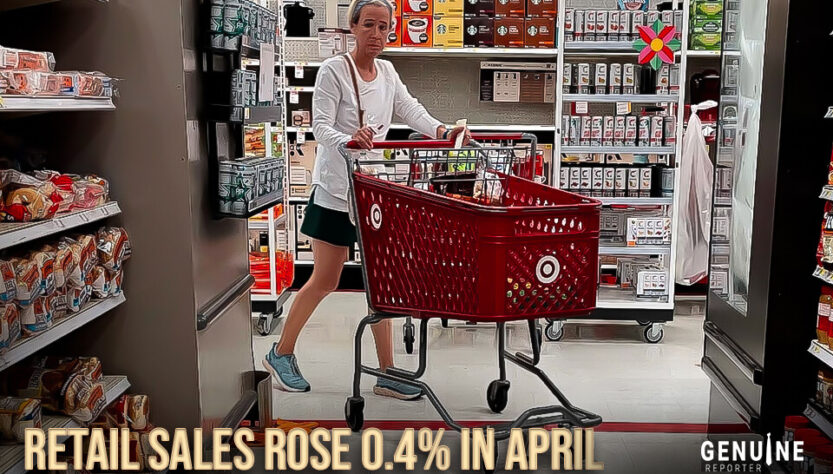The advanced sales report exhibited an increase of 0.4%, below the Dow Jones forecast of 0.8%. Mainly, it excludes auto-related figures, where sales climbed 0.4%, which was in line with expectations.
The headline increase equaled the 0.4% monthly gain in the consumer price index because the figures were not adjusted for inflation. Sales increased by 1.6% year over year, far below the 4.9% CPI rate.
Moreover, a 0.8% decline in gasoline sales held back the spending figures.
While furniture and home furnishings had a 0.7% loss, sporting goods, music, and book businesses all saw a 3.3% decline.
Retailers of other goods experienced an increase of 2.4%, while sales of online goods increased by 1.2% and those of health and personal care products increased by 0.9%.
Additionally, food and drink sales increased by 0.6% and were up 9.4% on an annual basis.
Lydia Boussour, senior economist at EY-Parthenon, said, “Retail sales posted a modest rebound in April, but the gain mostly reflected higher prices, and a sustained turnaround is unlikely with consumer fundamentals turning less supportive.”
However, the report indicated a struggling consumer; it was the first persuasive reading since January, which followed a 0.7% downshift in March. Also, the control group, excluding autos, building materials, gas stations, supply stores, and food service and drinking establishments, surged 0.7%, which was above the 0.4% expectation.
Ronnie Walker, an economist at Goldman Sachs, said in a note that, “Ultimately, the report was even stronger than our previous assumptions and indicates upside to the consumption outlook.”
Additionally, treasury yields increased after the report as the initial reaction was focused more on the positive ex-autos number, albeit stocks were lower in morning trading.
Although it is also said that consumers might still face a tough road ahead.
On Monday, Raphael Bostic, President of the Atlanta Federal Reserve, told CNBC that “I think a rate hike would be more likely than the cuts markets have been pricing in before the end of the year.”
Simultaneously, consumers have been running up higher debts to deal with the constantly high inflation. Overall, the total debt rose above $17 trillion in the first quarter as higher rates climbed borrowing costs for items like mortgages and credit cards, according to a New York Federal Reserve report on the same day.
Andrew Hunter, deputy chief U.S. economist at Capital Economics, wrote in a note that “As the labour market continues to cool and the drag from the Fed’s aggressive monetary tightening feeds through, we suspect a further slowdown lies ahead.”
Also, in a speech on Tuesday morning, Loretta Mester, President of the Cleveland Federal Reserve, noted the “long-run costs” of inflation and agitated that the central bank is committed to returning inflation to the 2% target.
Moreover, according to the Federal Reserve, other economic news on Tuesday saw a 0.5% increase in industrial production for the previous month, which is estimated to be better than the 0.1%.
Also, capacity utilisation was at 79.7%, just below the estimate.
At the end, the National Association of Home Builders sentiment index surged to 50 as of now, better than the estimate of 46.
- Published By Team Genuine Reporter

